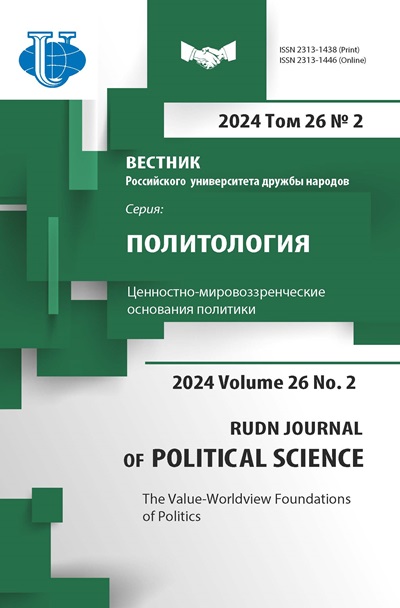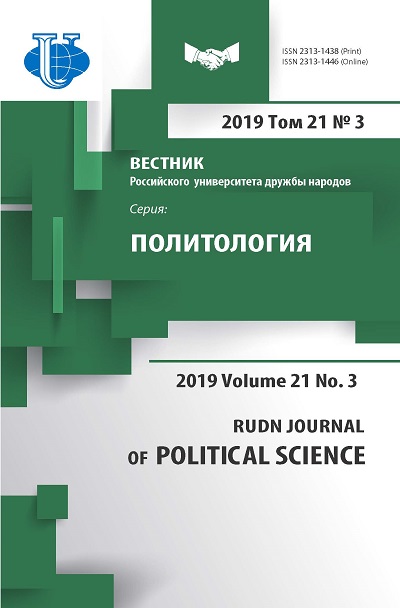The Image of Russia in the Russian Television (Research Conducted in 2017-2019)
- Authors: Vinogradova N.S1
-
Affiliations:
- Moscow State University of Technologies and Management named after K.G. Razumovsky (FCU)
- Issue: Vol 21, No 3 (2019)
- Pages: 397-408
- Section: Political process in contemporary Russia: Prospects and trends
- URL: https://journals.rudn.ru/political-science/article/view/22052
- DOI: https://doi.org/10.22363/2313-1438-2019-21-3-397-408
Cite item
Full Text
Abstract
The image of Russia is one of the key components for determining the self-identity of the population, the growth of trust in the government, and an understanding of current politics and economics conducted in the country. The purpose of this study is to identify the image of Russia in Russian political and non-political television programs for the period of 2017-2019. The research methodology included content analysis of Russian television programs. Quantitative and qualitative methods, including case studies, were used to interpret the data. The image of a country consists of a spatial (territorial) image, an image of a population, an image of power, and an image of a leader. In the analysis, subjective, objective, spatial, temporal and communicative sections were identified. The performed analysis made it possible to identify some features of the formation of the image of Russia in TV shows. The resulting image is directly dependent on the event context and is its reflection. The underlying parameters, such as political culture, are not considered. The main topics raised in TV shows were the conflict in Ukraine, conflict in Syria, sanctions and international relations of Russia, the USA and the EU, election of the President of the Russian Federation and the election of the President of the United States. The image of the country is translated as strong, cognitively complex, dynamic. Most of the messages are positive, since they are focused on the domestic audience, the policy of the channels themselves is designed to show the diversity of opinions, but, at the same time, to raise the country’s prestige in the eyes of the audience. The negative characteristics of the image involve the comments of foreign politicians and experts, which are broadcast on Russian television. Changes in the spatial image due to the reunification with Crimea are shown most vividly. This topic has been relevant for a period of five years. The political leader is represented as strong both in the international arena and in dealing with domestic issues.
About the authors
Nadezhda S Vinogradova
Moscow State University of Technologies and Management named after K.G. Razumovsky (FCU)
Author for correspondence.
Email: nadivinogradova@gmail.com
PhD in Political Science, Associate Professor of the Social Processes, Mass Media and Advertising Technologies Department
Moscow, Russian FederationReferences
- Shestopal E.B., Smulkina N.V. How do Russian Citizens See Their Country Today? Politia. 2018; 2 (69): 51—68. doi: 10.30570/2078-5089-2018-89-2-51-68 (In Russ.).
- Lasswell H. The Structure and Function of Communication in Society. The Communication of Ideas. Ed. by L. Bryson. N.Y.: Harper; 1948: 32—51.
- Psychology of Political Perception in Modern Russia. Ed. by E.B. Shestopal. Moscow: ROSSPEN; 2012. 432 p. (In Russ.).
- Semenenko I.S. Culture, Society and the Image of Russia. Neprikosnovennyj zapas. Debaty o politike i kul’ture. 2007; 1: 51—57. Available from: http://www.intelros.ru/2007/05/29/irina_ semenenko_kultura_obshhestvo_i_obraz_rossii.html. Accessed: 04.03.2019 (In Russ.).
- Zamyatin D.N. Political and Geographical Images of the Russian Space. Herald of Eurasia. 2003; 4: 34—45 (In Russ.).
- Mediascope: official website. Available from: http://mediascope.net/about/company/russia/. Accessed: 08.07.2018 (In Russ.).
















